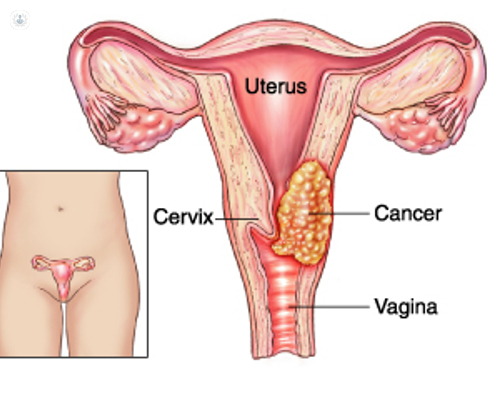

What is a cone biopsy?
A cone biopsy, also known as cervical conisation, is small diagnostic procedure, performed using general anaesthetic, that removes a cone-shaped section of abnormal tissue from the cervix. A cone biopsy is used to detect cervical cancer or pre-cancerous cells. It is also a treatment option to remove all abnormal (pre-cancerous cells).

What does a cone biopsy involve?
General anaesthesia is given. Surgery starts by the placement of a speculum into your vagina so that the cervix can be viewed. Next a small cone-shaped section of tissue is removed from the cervix, either by a scalpel, a heated wire loop or a laser. The procedure takes about 15 minutes.
The removed tissue is then sent to the laboratory to ensure all abnormal cells have been removed or to check for cancer. To stop any bleeding gauze might be placed on the vagina. Whilst this is in place, a catheter might be inserted.
Why is a cone biopsy done?
A cone biopsy would be recommended if you are experiencing symptoms associated with cervical cancer. You might also have a cone biopsy to treat abnormal cervical cells, detected through cervical screening. Abnormal, pre-cancerous cells, if left untreated, can develop into cervical cancer.
Preparation for a cone biopsy
As this procedure is performed with general anaesthetic, food has to be avoided 6-8 hours beforehand, and drink stopped 2 hours before surgery.
What does a cone biopsy feel like?
Following a cone biopsy, you might have some cramping for a week. For 2-3 weeks following the procedure, your discharge might be bloody, heavy and yellow-coloured. It is important to refrain from using tampons and having sexual intercourse for 4-6 weeks following the surgery.
What do abnormal results from a cone biopsy mean?
A normal result would mean there are no cancerous or pre-cancerous cells in the cervix.
An abnormal result would mean that there cancerous or pre-cancerous cells in the cervix. If cancer is detected, then further tests will be carried out and a treatment plan put in place, all to be discussed with your specialist.
